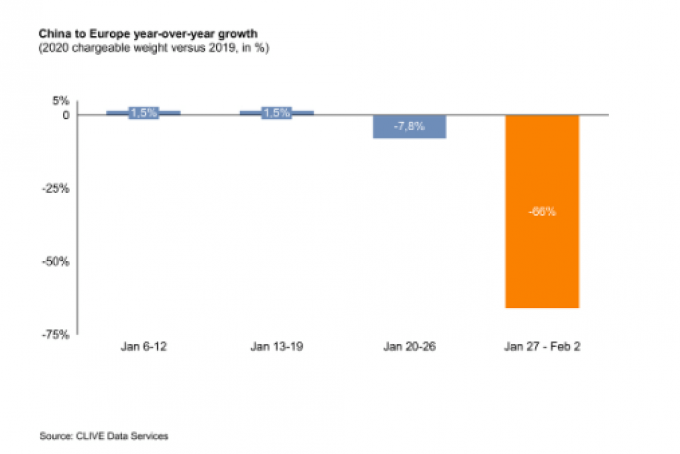Forwarders predict fall in airfreight rates as ecommerce eyes sea freight
Forwarders are warning that although the airfreight market currently seems stable, conditions could change very ...

The moveable feast that is Chinese new year always makes it difficult to interpret the first statistics, in January and February,.
This year it is harder than ever, with the new year holiday extended, factories shut or under-staffed and capacity to China in a downward spiral.
The latest air freight information from Clive Data Services, for the four weeks up to 2 February, shows a year-on-year decline of 4%, with the dynamic load factor down two percentage points to 65%.
As Clive noted, ...
Keep our news independent, by supporting The Loadstar
Volume surge and an early peak season? 'Don't celebrate too soon,' warning
Container spot rates diverge: to Europe still falling, but firmer to the US
Ecommerce likely the front-runner in resurge of transpacific trade after deal
Hapag-Lloyd won't take bookings if port congestion leaves cargo stranded
China-US trade tariff pause could drive a rebound for transpacific rates
Shippers should check out the 'small print' in China-US tariff cuts
Service chaos from trade ban with India a problem for Pakistan shippers
Carriers impose 'emergency operation' surcharges on Pakistan cargo
Airfreight rates ex-China 'loss-making', but hopes of a trade deal stay high
Serious threat to jobs in US logistics as tariffs cause economic 'stagflation'
15% rebate for box ships as Suez Canal Authority woos carriers
White House u-turns see freighters flying but keep logistics players on their toes
MSC in terminal switch as Nhava Sheva gets strong start to new fiscal year
Peak season or recession? Forwarders and shippers need to 'stay flexible'
Volga-Dnepr claims 'pirate' Canada has 'hijacked' its stranded aircraft


Comment on this article